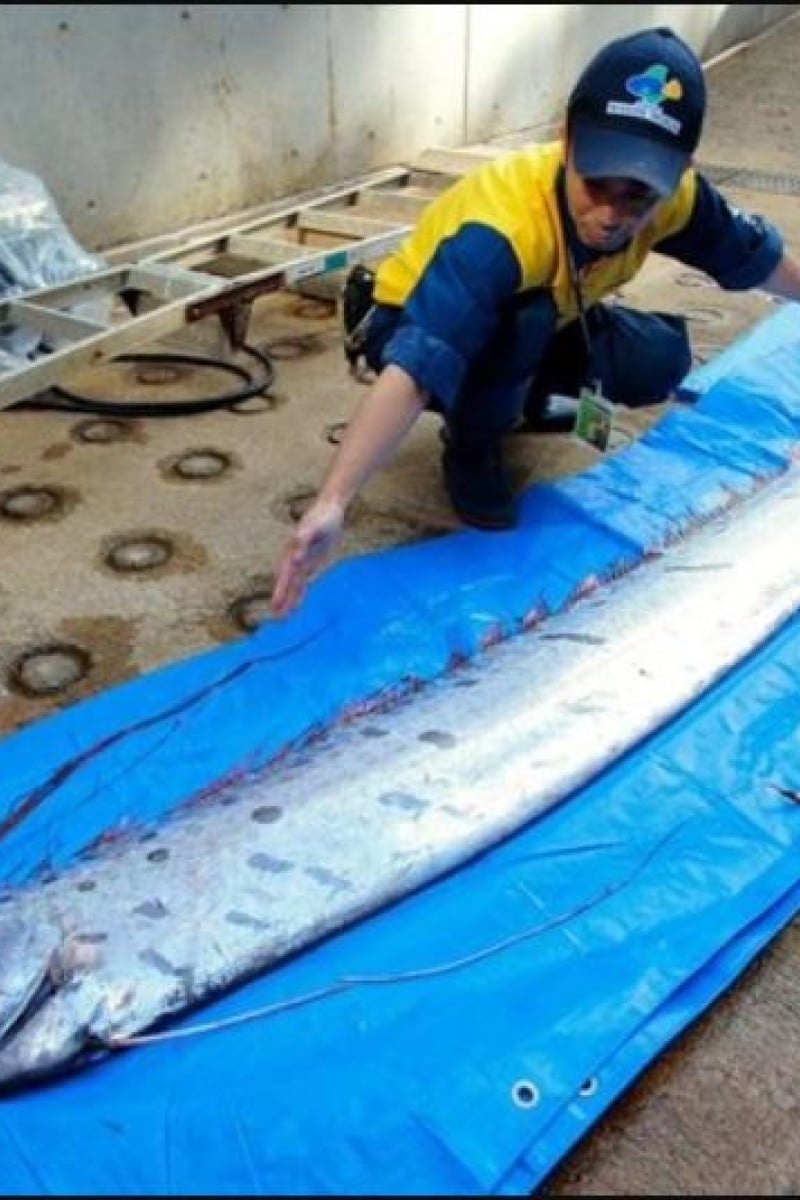
Earthquake and tsunami fears erupt on social media in Japan as 'bad omen' oarfish spotted
Traditional belief states these creatures are sighted before natural disasters, but scientists say people are worried for no reason
 In Japanese legends, oarfish are seen forecasts of natural disaster.
In Japanese legends, oarfish are seen forecasts of natural disaster.Social media in Japan has exploded after a number of deep-sea fish were caught. People are worried because these creatures are traditionally thought to be omens of natural disaster.
The species – which have long, silver bodies and red fins – usually live in deep waters. They are rarely seen from the surface, but legend says that when oarfish rise to shallow waters, disaster is near.
Even the species’ traditional Japanese name, ryugu no tsukai – which translates as “messenger from the palace of the dragon king” – hints at its links to natural disasters in the past.
According to folklore, the fish rise to the surface and beach themselves ahead of an impending earthquake. That ties in with scientific theories that bottom-dwelling fish may very well be sensitive to movements in seismic fault lines, and act in uncharacteristic ways before an earthquake.
Hiroyuki Motomura, a professor of ichthyology, or fish studies, at Kagoshima University, has a more mundane explanation for the recent discovery of oarfish off Toyama Prefecture.
“I have around 20 specimens of this fish in my collection so it’s not a very rare species, but I believe these fish tend to rise to the surface when their physical condition is poor, rising on water currents, which is why they are so often dead when they are found,” he said.
“The link to reports of seismic activity goes back many, many years, but there is no scientific evidence of a connection so I don’t think people need to worry.”
Nevertheless, the oarfish’s reputation as an indicator of imminent doom was enhanced after at least 10 oarfish were washed up along Japan’s northern coastline in 2010. In March 2011, a magnitude-9 earthquake struck off northeast Japan, triggering a massive tsunami that killed nearly 19,000 people and destroyed the Fukushima nuclear plant.
With that anniversary looming, people on social media became jittery about the omens.
Journalists share their memories of the 2011 triple disaster at Fukushima
A message on Twitter claimed: “This is no doubt evidence of a precursor to an earthquake. And if it is in the Nankai Trough, it might be a huge quake.”
Experts warned a tremor in the Nankai Trough, which runs parallel to Japan’s southern coast from off Nagoya to the southern island of Kyushu, could be imminent and resulting tsunami could cause massive loss of life and destruction in coastal areas.
The most recent government predictions suggest a tsunami more than 30 metres high could be generated by a major quake.
One Twitter user asked: “Is something happening deep in the sea?”
Another questioned: “What is going on under Toyama Bay?”
Which countries are most at risk from natural disasters?
Comments on other social media sites echoed those concerns, with one post in the 5-Channel site claiming increased sightings were “a warning”.
Despite the concern, experts said it was not possible to scientifically link increased sightings of oarfish with an impending natural disaster.
Professor Shigeo Aramaki, a seismologist at the University of Tokyo, dismissed the fears of social media users as “nothing”.
“I’m not a specialist in fish, but there is no academic literature that has proven a scientific link to the behaviour of animals and seismic activity,” he said. “I see absolutely no reason for concern and I have seen no updated reports of increased seismic activity in this country in recent weeks.”
The Japanese government, however, announced a new package of response measures to a major earthquake beneath Tokyo, including additional steps to evacuate foreigners from the city.
They also call for improved delivery of information on places to take shelter, evacuation routes and medical treatment. The information will be made available in more languages via disaster information websites.
